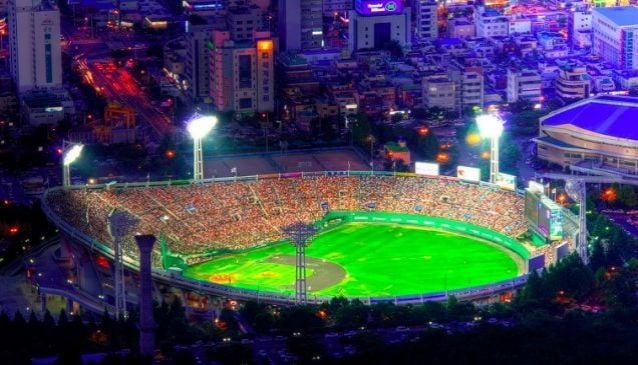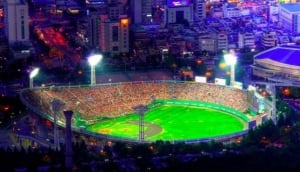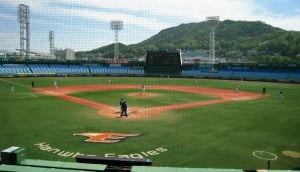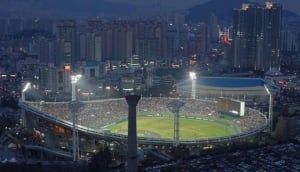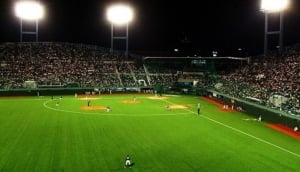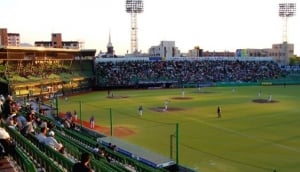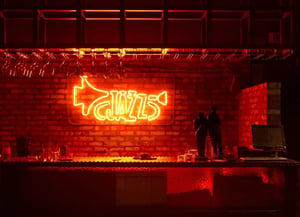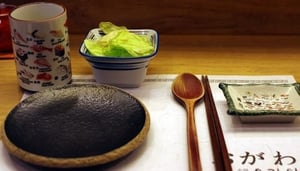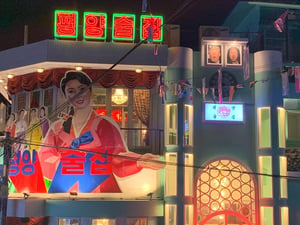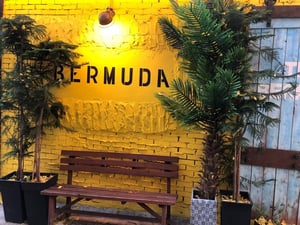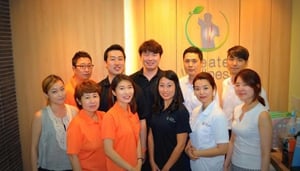A Local's Guide to Baseball Stadiums in Korea
The more interesting aspect is definitely the stadium experience
Despite one's nationality, a profound love for sports in their home country generally prevails.
For instance, cricket is a fan-favorite in Britain, rugby is held close to the hearts of New Zealanders, and baseball has a longstanding tradition as a beloved pastime in the United States.
However, it is important to note that baseball has evolved beyond its American roots to become a global spectacle, drawing large crowds from every corner of the world. This growing global popularity of baseball can be witnessed in events such as the World Baseball Classic. This major international sports event is followed and celebrated by sports enthusiasts globally.
Moreover, the Little League World Series also garners a significant amount of attention and coverage from several sports channels worldwide. These baseball tournaments not only elevate the popularity of baseball on a worldwide scale but also foster a sense of shared culture and camaraderie amongst different nations.
Therefore, while every nation may have a sport that is cherished domestically, the reach and impact of these sports are increasingly becoming international, fostering a global shared sports culture.
Table of Contents
Baseball in Korea
The allure of baseball in Korea remains incomparable to any other sport in the nation, except perhaps soccer. Just as in numerous other countries, ardent fans rally behind their beloved teams. They parade around in matching jerseys and hats, creating a vibrant spectacle of animated spectators who vociferously cheer their team to victory under the dazzling stadium lights.
At the heart of baseball in Korea is the Korea Baseball Organization, known as the KBO. Key highlights of Korean Baseball include:
-
KBO's Leagues: KBO's purview encompasses both the lower-tier Futures League and the professional level Korea Professional Baseball. As of 2021, there are 10 franchises comprising the professional league, each boasting a fervent fan following.
-
Baseball Broadcasts: Like most places globally, baseball games are easily available for viewing on television. However, Korean baseball has unique attributes that set it apart from its international counterparts.
-
Team Ownership and Naming: Unlike sports organizations in most countries, Korean baseball teams are majorly owned by substantial Korean corporations such as Samsung and Kia. Interestingly, the team names reflect their ownership rather than the city they are based in.
-
Game Regulations: Every Monday is a rest day for the league, with no games played. Additionally, rules explicitly state that no game can stretch beyond 12 innings to ensure player welfare and viewer engagement.
-
All-Star Game and Playoffs: An All-Star game is organized around mid-July each year, amidst much fanfare. The season culminates with an exhilarating four-team playoff to determine the championship.
However, what distinctly marks Korean baseball from its global contemporaries is the unmistakably electrifying experience provided at the stadiums. The lively atmosphere coupled with the enthusiastic cheer of the fans truly imbues one with a sense of thrill and excitement that goes beyond the simple act of watching a baseball game.
Baseball Stadiums in Korea
Baseball Stadiums in Korea are brimming with passion and fandom that distinguish the country's unique baseball culture. Among these stadiums, eight standouts, with one accommodating two home teams, appeal to visitors with their sheer size and available amenities. They also distinguish Korean baseball from others globally for the permit they extend for guests to bring their own food and drinks. However, there's an abundance of food vendors on-site serving delicious items like chicken, pizza, and traditional Korean foods.
Surprisingly affordable and hassle-free, the cost of beer in these stadiums equals the price at local convenience stores. Another unique spectacle you're bound to enjoy is the sight of lively cheerleaders and electrifying fans with thundersticks — a sight to behold!
Each of these stadiums offers a different experience. From the grandeur of the Seoul Sports Complex's Jamsil Baseball Stadium, which has hosted multiple international events, to the historical Hanbat Baseball Stadium, one of Korea's oldest. These stadiums entail unique amenities like uniquely low fences favourable for home-run hitters and diverse food option including Western cuisines like Burger King and Kentucky Fried Chicken.
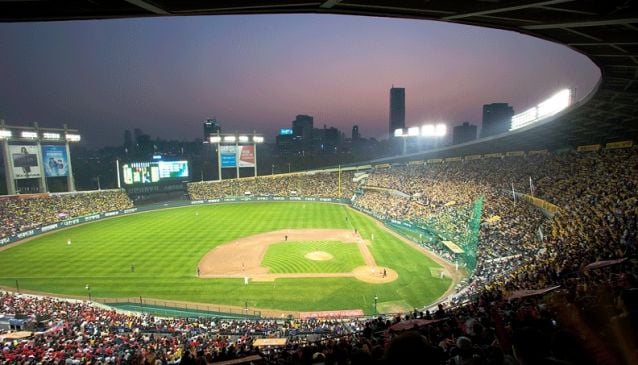
A list of the stadiums includes:
-
Jamsil Baseball Stadium
- 10, Jamsil-dong, Songpa-gu, Seoul, South Korea.
- Capacity: 26,000
- Opened: 1982
- Ticket Prices: 7,000-70,000
- Teams: LG Twins & Doosan Bears
- Championships: 1994, 1990 (Twins) 2001,1995,1982 (Bears)
- Website: doosanbears.com & lgtwins.com
-
Mokdong Baseball Stadium
- 914 Mok-dong. Yangcheon-gu, Seoul, South Korea
- Capacity: 18,000
- Opened: 1989
- Ticket Prices: 10,000-55,000
- Team: Nexen Heroes
- Championships: 2004, 2003, 2000, 1998
- Website: heroes-baseball.co.kr
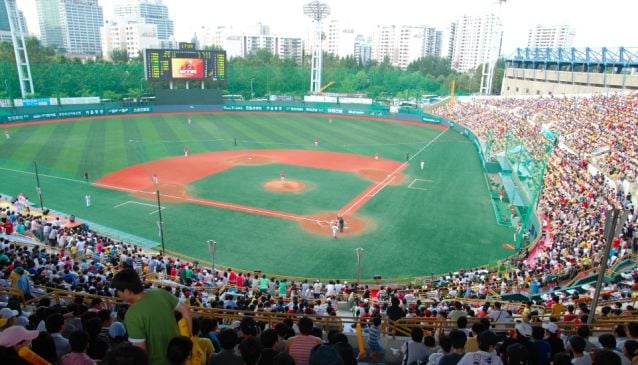
-
Hanbat Baseball Stadium
- 177, Busa-dong, Jung-gu, Daejeon, South Korea
- Capacity: 14,133
- Opened: 1964
- Ticket Prices: 7,000-120,000 (Skybox 240,000-500,000)
- Team: Hanwha Eagles
- Championships: 1999
- Website: hanwhaeagles.co.kr
-
Gwangju Mudeung Baseball Stadium
- 620, Im-dong, Buk-gu, Gwangju, South Korea
- Capacity: 13,000
- Opened: 1965
- Ticket Prices: 7,000-36,000
- Team: Kia Tigers
- Championships: 2009, 1997, 1996, 1993, 1991, 1989, 1988,1987, 1986, 1983
- Website: tigers.co.kr
-
Sajik Baseball Stadium
- 930, Sajik-dong, Dongnae-gu, Busan, South Korea
- Capacity: 28,500
- Opened: 1985
- Ticket Prices: 7,000-40,000
- Team: Lotte Giants
- Championships: 1992, 1984
- Website: giantsclub.com
-
Masan Baseball Stadium
- 477, Yangdeok-dong, Masanhoewon-gu, Gyeongsangnam-do, South Korea
- Capacity: 14,164
- Opened: 1982
- Ticket Prices: 5,000-40,000 (20 seat Skybox 700,000-800,000)
- Team: NC Dinos
- Championships: N/A
- Website: ncdinos.com
- Newest team to join the KBO
-
Daegu Baseball Stadium
- 2, Goseong 3(sam)-ga, Buk-gu, Daegu, South Korea
- Capacity: 13,000
- Opened: 1981 (Daegu Citizen Stadium 1948)
- Ticket Prices: 7,000-30,000
- Samsung Lions
- Championships: 2012, 2011, 2006, 2005, 2002, 1985
- Website: samsunglions.com
-
Munhak Baseball Stadium
- 618, Maesohol-ro, Nam-gu, Incheon, South Korea
- Capacity: 28,000
- Opened: 2002
- Ticket Prices: 9,000-30,000 (Mini Skybox 4-6 seats 200,000-300,000/Skybox 8-24 seats 500,000-1,350,000)
- SK Wyverns
- Championships: 2010, 2008, 2007
- Website: sksports.net
Remember, each stadium offers its own distinctive experience; so why not make it a point to visit each before investing in a jersey? Happy spectating!
Click here to buy baseball game tickets in Korea
Baseball is one of the most popular sports in South Korea, attracting both local and international fans. Both the Korean Baseball Organization (KBO) and the Korean Baseball League (KBL) are significant sports organizations that support the growth and recognition of the sport. The teams play crucial roles in fostering the sport’s popularity and expanding its fan base. They participate in numerous local and international competitions that showcase the skills and talents of Korean baseball players.
KBO League
The KBO League is South Korea's highest level of baseball, boasting ten teams. Each team boasts a dedicated and passionate fan base that follows the team's progress in all tournaments. Some of the recognized teams in the league include:
-
Doosan Bears: Comprising skilled and committed players, the team has won several tournaments and championships, making them one of the top teams in the league.
-
Lotte Giants: Based in Busan, the second most populous city in South Korea, this team is famous for its passionate and dedicated fan base.
-
SK Wyverns: The team is based in Incheon and emerged as one of the strongest teams in the Korean baseball league.
-
LG Twins: The team is based in Seoul, the capital city of South Korea, and is one of the most supported teams in the league.
-
Samsung Lions: The team is located in Daegu and are renowned for their professional approach to the sport, winning numerous championships.
Korean Baseball League (KBL)
The KBL is another prestigious baseball league in South Korea that comprises professional sports teams. Although it is not as large as the KBO, its competitiveness and level of play are commendable. The following teams effectively represent the KBL:
-
NC Dinos: This well-supported team is known for their high-quality game-play and competitiveness.
-
Kiwoom Heroes: A highly competitive team with a avid fan base.
-
Hanwha Eagles: Based in Daejeon, they've managed to stay competitive throughout the league with their skilled players and strategic game tactics.
In conclusion, baseball in South Korea continues to inspire and attract a large audience due to its intoxicating enthusiasm and high level of competitiveness. Both the KBO and KBL provide platforms for professionals to exhibit their prowess and contribute to the growth of the sport in the country. Whether you're a local or a visitor in South Korea, attending a baseball game will bring you closer to understanding the passion the country holds for this remarkable sport.
Frequently Asked Questions
What are some must-visit baseball stadiums in Korea?
Some of the must-visit baseball stadiums in Korea include Jamsil Baseball Stadium in Seoul, home to the LG Twins and Doosan Bears, and Sajik Baseball Stadium in Busan, where the Lotte Giants play. These stadiums are known for their electric atmospheres and passionate fan bases.
What are the typical game-day experiences at Korean baseball stadiums?
Game-day experiences at Korean baseball stadiums often include enthusiastic cheering, coordinated fan chants, and cheerleading squads that keep the energy high throughout the game. Vendors selling popular Korean snacks like fried chicken and beer are also a staple, enhancing the communal and festive spirit of the event.
How can tourists purchase tickets for baseball games in Korea?
Tourists can purchase baseball game tickets online through team websites or third-party ticketing platforms. It’s also possible to buy tickets directly at the stadium's box office on game day, but popular games may sell out quickly, so it's recommended to buy in advance if possible.

